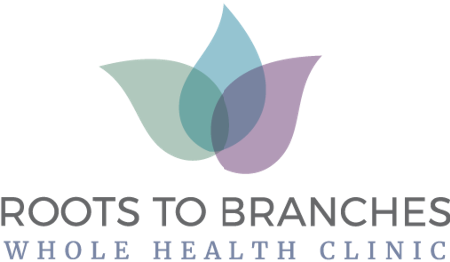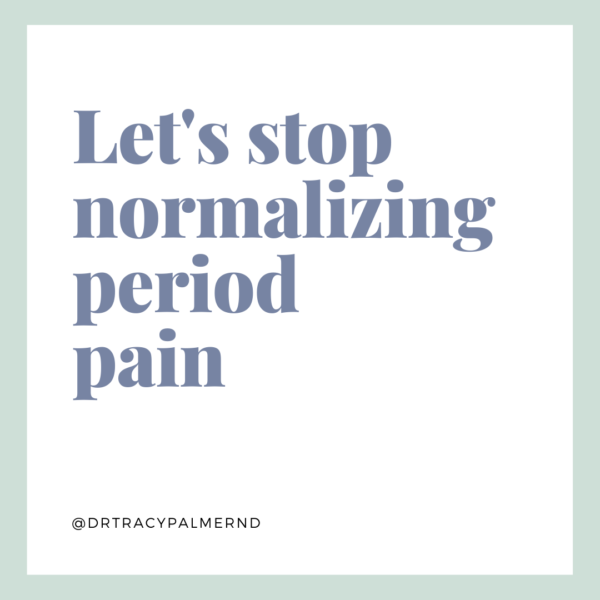News flash: your period pain should not be debilitating; you should not be missing work because of your menstrual cycle – this is not normal. If you have to take more than two over-the-counter pain medications per month to manage your period pain, this is a sign of inflammation and worth questioning. Period pain has become normalized in our culture and it’s time to change the narrative.
One of the most significant causes of period pain that often goes undiagnosed is endometriosis. Despite up to 10% of reproductive-aged women being affected and anywhere between 9-68% of women who experience infertility, the diagnosis of endometriosis can be delayed or missed on average, for 6-11 years. It often goes undetected until a couple is trying to conceive and experiences infertility.
A diagnosis of endometriosis can be tricky because it can involve multiple body systems. Accurate diagnosis of endometriosis begins with listening to a women’s health history and avoiding normalizing period pain.
Signs and Symptoms of Endometriosis
The most common symptom of endometriosis that leads women to seek care is:
- Generalized pelvic pain (on average 24% of women who have pelvic pain are ultimately diagnosed with endometriosis)
- Pain around your menstrual cycle
- Pain with intercourse or other sexual activity that involves penetration
- Pain around your menstrual cycle
- Women can also experience low back pain that worsens during menses, rectal pain and pain with bowel movements, as well as pain with urination.
Other signs and symptoms of endometriosis:
- Infertility – sometimes women can have minimal to no symptoms with endometriosis and it may not be diagnosed until they experience infertility.
- Heavy menstrual bleeding or bleeding in between cycles
Diagnosing Endometriosis:
At this time, the gold standard for diagnosing endometriosis is through a laparoscopic inspection and biopsy to confirm the presence of endometriosis. This test is invasive and part of the reason why diagnosis can be delayed.
What you can do to help:
- Bottom line, if you are experiencing symptoms that could be endometriosis, it is important to get a proper investigation and diagnosis and to have a Medical Doctor as part of your health care team, as pharmacological or surgical treatment, depending on the severity of the endometriosis, may be warranted.
- Dietary strategies to support lowering your risk of endometriosis or lessening the severity of your endometriosis symptoms, include:
- Reduce your red meat consumption to less than 1x/week and increase your consumption of fish to 2x/week. Women who eat red meat at least 1x/day had an increased risk of developing endometriosis and those with low fish and omega-3 intake also had a higher likelihood of endometriosis. Other sources of protein to include are chicken, turkey, low-fat dairy, eggs, plant proteins such as beans and legumes, and other seafood such as shrimp, scallops, oysters, etc.
- Load up on fruits and vegetables. A diet high in fruits and vegetables has been shown to help lower inflammation and reduce pelvic pain. Aim for 8-10 servings per day and try to get as much variety as you can (this is a great way to get a broader source of nutrients and antioxidants)
- Optimize intake of other healthy fats: Consumption of olive oil has been shown to help with menstrual pain, so include 1 serving (1-2 tbsp) per day.
- Reduce your red meat consumption to less than 1x/week and increase your consumption of fish to 2x/week. Women who eat red meat at least 1x/day had an increased risk of developing endometriosis and those with low fish and omega-3 intake also had a higher likelihood of endometriosis. Other sources of protein to include are chicken, turkey, low-fat dairy, eggs, plant proteins such as beans and legumes, and other seafood such as shrimp, scallops, oysters, etc.
Naturopathic medicine can help support period pain, both when associated with endometriosis and not. It’s important to identify the root cause and we can work towards painless periods with diet & lifestyle changes, herbs, supplements, and/or acupuncture as needed. Book your women’s health initial appointment here.
References:
- Wellbery, C., Diagnosis and Treatment of Endometriosis. Am Fam Physician. 1999 Oct 15;60(6):1753-1762.
- Cramer DW, Missmer SA. The epidemiology of endometriosis. Ann N Y Acad Sci. 2002;955:11-406. doi:10.1111/j.1749-6632.2002.tb02761.x.
- Ghiasi M, Kulkarni MT, Missmer SA. Is Endometriosis More Common and More Severe Than It Was 30 Years Ago?. J Minim Invasive Gynecol. 2020;27(2):452-461. doi:10.1016/j.jmig.2019.11.018.
- Management of Endometriosis. ACOG Practice Bulletin Number 114. American College of Obstetricians and Gynecologists. July 2010, reaffirmed 2018

